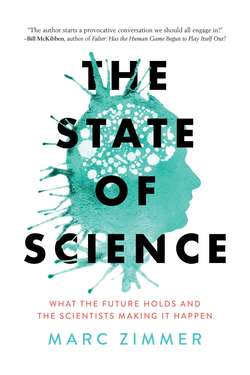Читать книгу The State of Science - Marc Zimmer - Страница 10
На сайте Литреса книга снята с продажи.
Challenges to Science
ОглавлениеPresident Donald Trump is not a strong supporter of science, the scientific method, or facts. In his tweets he promotes conspiracy theories and implores Americans to distrust conventional sources of information and traditional institutions. In his first 5,000 tweets as president, the words “science” and “technology” were never used. It took two years before he appointed a science adviser. Deregulation has been a priority of the Trump administration, and by July 2019 it had rolled back more than 80 environmental rules and regulations.[14] It has weakened the Environmental Protection Agency (EPA), cutting staff and budgets and undercutting the agency’s ability to use science in its policy making, resulting in steep drops in civil and criminal enforcement of violations of laws such as the Clean Air and Clean Water Acts.[15] According to the EPA, the number of “unhealthy-air days” has increased by 14 percent under this administration, and ozone, nitrous oxide, and particulate matter are more common than in 2016.[16] One of the most telling facts is that both the EPA and CDC have been prohibited from using the phrase “evidence-based” in their publications and press releases. So far, thanks to congressional intervention, the budgets of the National Science Foundation (NSF) and the National Institutes of Health (NIH) have survived, despite three requests by the Trump administration to reduce their size and their budgets.
Ironically, although he has claimed that climate change is “bullshit,” “pseudoscience,” and “a total hoax,” President Trump’s representatives have applied for permission to erect a sea wall to protect one of his golf courses in Ireland from rising seas due to “global warming and its effects.”[17] (Although this book could easily have been a rant about the Trump administration and its attitudes toward science, I have tried to show some restraint and have limited my comments about the president to the first and last chapters.)
President Trump’s opinions weren’t formed in a vacuum. He was elected by the American public and still has support. This reflects the increasing public mistrust and resentment of experts. This rejection of scientific thinking and evidence comes from many directions: postmodernist academics and journalists, Christian fundamentalists, liberal new-age purists, and industrial interests and lobbyists. A 2015 Pew Research Center poll showed that “a sizable opinion gap exists between the general public and scientists on a range of science and technology topics,” and that “compared with five years ago, both citizens and scientists are less upbeat about the scientific enterprise.”[18] In The Workshop and the World: What Ten Thinkers Can Teach Us about Science and Authority, Robert Crease writes, “Some people, including many scientists, seem resigned to this. They hope that scientific authority is a natural thing that will shortly reassert itself, like a sturdy self-righting boat knocked over by a rogue wave.” He argues that this is not going to happen because the scientific process described earlier in this chapter is inherently vulnerable to attacks. “The fact that it is done by collectives, is abstract and always open to revision” provides fuel for science deniers. To change their minds, we can’t just explain the science over and over again; we have to learn how they think and why they are rejecting science.[19]
Many scientists and science supporters have rallied against the antiscience bias, climate denial, flat-earthers, and anti-vaxxers. For example, the first March for Science was held on April 22, 2017; many scientists ran for office in the 2018 elections; and there have been many initiatives to improve scientific outreach.
